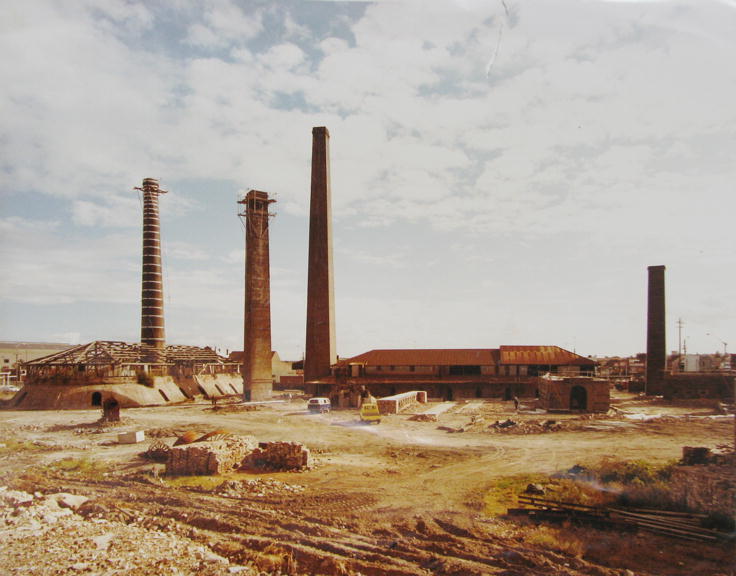Up until the 1970s, the vast majority of Sydney's bricks were manufactured within the inner west, predominantly the Marrickville and Newtown area. The inner west region was selected thanks to it's abundance of clay in the form of Wianamatta Shale by Australia's first colonial settlers. During the industrial revolution when machinery increased the mass production of bricks, tiles and other earthenware, alternate locations of clay deposits were needed to replace an almost depleted inner west now sporting a large empty quarry only 4 kilometers from the cities central business district. The vast clay pits which had been excavated for clay were repurposed as waste tips with prominent structures remaining on site to this day, including the brick works located in St Peters in what is known today as Sydney Park, which was remediated by layering soil and rubble on top of the refuse to create a large park and waterlands environment which is open to the public.
The Mortar Disorder
ˈmɔːtə/
noun
noun: mortar
A mixture of lime with cement, sand, and water, used in building to bond bricks or stones.
NOTE: Rather than replicate the same content available on several thousand pages across the internet discussing the correct ratios of ingredients and proper application technique, this article is an attempt to address the areas of research which are integral to the end outcome of any masonry project.
The relationship between bricks and mortar is not dissimilar to that of the relationship between shoes and shoelaces or cameras and film, given that each without the other is practically useless or to quote Aristotle, the whole is greater than the sum of its parts.
Historically speaking, mortar was simply the uncured format of the construction medium being used ie, clay for clay bricks and lime and gypsum being utilised for setting stones and slate.
Much like the process of laying bricks, the composition of modern mortars differ only slightly to that of long past eras with the fundamentals qualities being universal, the ingredient list seldom changes without technological advancement or designs specifically formulated for specialty applications.
So, sounds simple right, people have been affixing one brick to another for millennia and the material that binds them is practically the same that built the colosseum , how could you possibly go wrong? Well, there are actually plenty of ways that you can make a complete and utter mess of your little weekend DIY project. Take for example your local Bunnings, the obvious choice for retail levels of building supplies, a shop specifically targeted at the do it yourself market, check out the mortar isle and you will soon be met by a selection of over 60 different products with prices ranging from loose change to entire paycheques.
Selecting the right product for the right job is one of the most important steps in the entire process of restoring, modifying or laying bricks, therefor it is important have a clear understanding of what exactly it is that you are trying to achieve. Australia's older brick structures (pre 1940) generally were constructed with a soft pure lime mortar and new developments tend to use a much harder cement compound with variations and mixtures of the two types appearing sporadically throughout the interim. Basically, some mortars are traditional "which may be important if you are wishing to restore a structure to period correct qualities" some are easier to work with and some will yield better results in certain environments.
Examine the situation, determine what nature of mortar is keeping your existing bricks together, scratch it with a sharp metallic object, does it scratch and leave a mark, if yes - chance are that you've got a soft lime mortar compound (traditional) if more resilient, crumbly and containing reflective silica you may have a modern cement mortar, not sure from questionable results, why not examine other structures erected in the area from a similar period and those which are newer, it may give you contrast and perspective. If still no clear conclusions, you may want to look at having an expert examine the chemical composition of the mortar for accurate analysis.
And that's practically it, now that you have an understanding of what you're dealing with and what you wish to achieve, you can now read the articles necessary to do so without getting mislead by conflicting ideas and instructions. Below are a few handy resources on using various forms of render>
How to mix all kinds of Mortar
Restorative and conservation works
Ultra modern techniques and materials





